 Image search results - "seta" Image search results - "seta" |

Hanegi Park is near Odakyu Umegaoka Station ("Umegaoka" means plum hill). 小田急梅ヶ丘駅
|
|
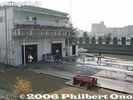
Seta Rowing Club's 2-story clubhouse located in Otsu, Shiga Prefecture. The club is a registered NPO. The club is named after Seta River at the southern tip of Lake Biwa. Regattas are also held on the river, Lake Biwa's sole outflowing river.
|
|

PR poster designed by Tetsuo OshiroPoster for the race.
京都大学ボート部OBの尾城徹雄様に作成したポスター。大学内や大津市石山商店街などで張り出された。
|
|

Entrance to Hanegi Park's plum grove
|
|
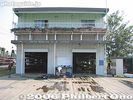
Seta Rowing Club's clubhouse. Boats are stored on the bottom floor, while the 2nd floor has office space, ergo machines, meeting room, locker room, etc. Web site here
|
|
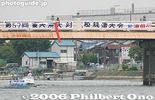
Karahashi Bridge as the starting point for alumni races
|
|

The plum trees are on a small hill.
|
|
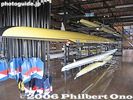
Oars and boats stored on the bottom floor. The club offers 2-hour rowing lessons on Sundays during May to Nov. Address: 6-1 Ogaya, Otsu, Shiga 520-2144 Japan. Phone/Fax: 077-545-9961, Email: info@setarc.jp
|
|

Hanegi Park has plum blossoms in mid-Feb. to early Mar. It has about 700 plum trees and also sports facilities and public library.
|
|

Many boats are made in Italy.
|
|

Kyoto Univ. in dark blue T-shirts
|
|
|
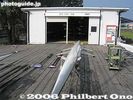
Right across the clubhouse is the Annex boat house.
|
|
|
|
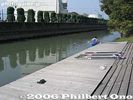
Club's boat dock. This narrow canal leads to Lake Biwa.
|
|

Finish line 300 meters later
|
|
|
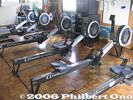
Rowing exercise machines called "ergometers" or "ergo" or "indoor rower." In Japan, they call it "ergo." エルゴThe machine measures the energy you expend rowing. Also measures how fast and far you rowed if you were on water. They even have ergo rowing contests which is a sport itself.
|
|

Tokyo Univ. (Todai) crew return to land after a race
|
|
|
|
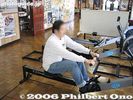
The rowing lesson starts with an ergo workout.
|
|
|
|

Carrying the boat.
|
|

The gateway to the Seta area is Karahashi-mae Station.
|
|

On July 29, 2007, this regatta was held for the second time. It targets mainly beginner rowers. Organized by the Seta Rowing Club which seeks to have more people enjoy water sports on Lake Biwa. Seta-Karahashi Bridge was the regatta's starting line. The Lake Biwa Rowing Song CD was awarded to all the 1st, 2nd, and 3rd place winners in all five categories.
|
|

Picnic area
|
|
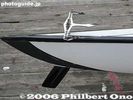
Sleek rudder and steering cables
|
|

Keihan train at Karahashi-mae Station.
|
|

Univ. of Tokyo alumni crew in light blue T-shirts
|
|

Sixty rowing teams (300 people) rowed in five categories, including beginner and expert rowers, ranging in age from junior high to senior citizens.
|
|

Stone monument for "Haru no Tsuki" haiku poem by Nakamura Teijo. 「春の月」中村汀女
|
|
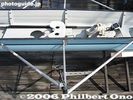
Rowing seat with moving seat on rails, fixed shoes, and outrigger for the oar.
|
|

Seta-no-Karahashi Bridge with the new paint job in 2012. 瀬田之唐橋
|
|

Kyoto Univ. alumni crew in dark blue T-shirts
|
|

This is the boat dock where people got on and off the boats. The boats were provided by local rowing organizations. The regatta was organized by the Seta Rowing Club in Otsu.
|
|

Stone monument for "Haru no Tsuki" haiku poem by Nakamura Teijo. 「春の月」中村汀女
|
|

Carrying the boat to water.
|
|

The original Seta-no-Karahashi Bride was the site of historic battles. It has two bridges, one long and one short going over an island in the river.
|
|

Kyoto Univ. alumni crew at start line
|
|

A rowing team leaves the dock for Seta-Karahashi Bridge seen in the background.
|
|
|
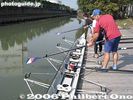
Inserting the oars into the outriggers.
|
|

The current bridge was rebuilt in 1979 and painted a beige color.
|
|

On Karahashi Bridge
|
|

Seta-Karahashi Bridge, the start line.
|
|
|
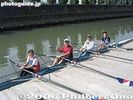
Ready to row on a "quad" sculling race boat. Each person rows with two oars.Sorry for the small image.
|
|
|

Race starts for Kyoto Univ. alumni
|
|

Up to four rowing teams raced down a 250-meter straight course.
|
|

Weeping plum blossoms
|
|
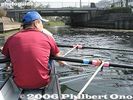
We now enter Lake Biwa.
|
|
|
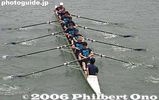
Kyoto Univ. alumni
|
|
|
|
|
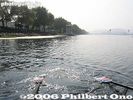
Lake Biwa Rowing Course operated by Shiga Prefecture for major rowing regattas. It is near the head of Seta River, and very near Seta Rowing Club.
|
|
|

Kyoto Univ. starts to veer off course
|
|
|
|
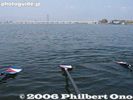
Oars keep the unstable boat stable.
|
|

Seta-no-Karahashi Bridge in autumn. 瀬田之唐橋
|
|

Kyoto Univ. is unable to correct their misdirection
|
|

All the boats are held stationary with a rope provided from the bridge.
|
|
|

The oar handles overlap when you pull them. Often my hands bumped into each other.
|
|
|
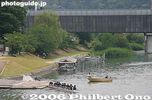
A faulty rudder runs them aground
|
|
|

Flower pair
|
|

Shoes are fixed to a small, angled platform.
|
|
|
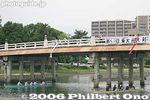
4-man crew alumni boat race
|
|
|
|

Near park entrance
|
|
|
|
|
|
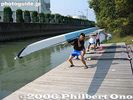
After a neat rowing trip, the boat is lifted out of the water.
|
|

Seta-no-Karahashi Bridge with the new paint job in 2012.
|
|
|
|
|

Rinsing the shell with fresh water.
|
|

Seta-no-Karahashi Bridge
|
|

8-man crew alumni in their 20s and 30s at starting line
|
|

Most races were not close.
|
|

The boat is pencil-thin.
|
|

Seta-no-Karahashi Bridge over Seta River
|
|
|
|
|

Rinsing the oars.
|
|
|

Kyodai alumni in their 20s and 30s
|
|

The 250-meter course is very short, and each race ends within a minute or two.
|
|
|
|
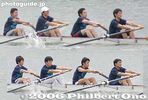
Kyodai alumni in their 20s and 30s
|
|

Finish line. In the background is the Kyoto University Rowing Club's boat house.
|
|
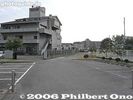
Entrance and road to the rowing clubhouse
|
|
|
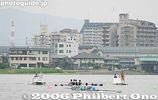
One of the main events, the 4-man boat race between Todai and Kyodai on a 3200-meter course.
|
|
|
|
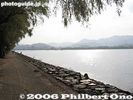
Near the rowing club is the Lake Biwa Rowing Course where regattas are held. 滋賀県立琵琶湖漕艇場
|
|

Todai's 4-man crew in the lead
|
|

The race had to be stopped for a few minutes each time this cruise boat passed by.
|
|

Kyodai's 4-man crew try to keep up
|
|

The Lake Biwa rowing Song CD was also sold.
|
|

Todai's 4-man crew rowing
|
|
|

Kyodai's 4-man crew rowing
|
|

The Lake Biwa rowing Song CD was also sold during the regatta which lasted from 9 am to 4 pm.
|
|

Kyodai's 4-man crew rowing with dark-blue blades
|
|

CDs
|
|

Todai won this one.
|
|

Sketch of regatta course
|
|
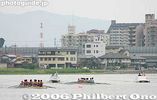
Main race: 8-man crew for Todai and Kyodai coming round the bend on the 3200-meter course
|
|

Dragon boat
|
|
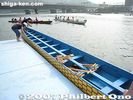
Dragon boat
|
|

Free rides on this dragon boat were also provided.
|
|

Kyodai is clearly in the lead
|
|

Kyoto Univ. rowing to victory
|
|

Dragon boat
|
|
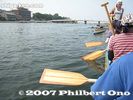
Rowing on the dragon boat
|
|

Univ. of Tokyo rowing
|
|

Dragon boat going to the Seta-Karahashi Bridge.
|
|

Kyoto University's winning rowing crew
|
|
|

Sleek racing row boats and traditional yakata picnic boats on upper right
|
|

Carrying the boat back
|
|

A taiko drummer sits at the front of the dragon boat.
|
|
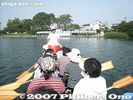
We rowed according to the taiko drum beat.
|
|

View of Seta River race course, Karahashi Bridge on far left. Tokyo vs. Kyoto Univ. Regatta
|
|

Awards ceremony
|
|

Kanpai!
|
|

Writing names on award certificates.
|
|

Alumni race starting at Seta no Karahashi Bridge
|
|

Celebrations
|
|

Some of the prizes awarded to the 1st, 2nd, and 3rd place winners. Notice the Lake Biwa Rowing Song CDs (75 copies).
|
|

Body tossing
|
|
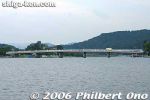
Seta Karahashi Bridge
|
|

Awards ceremony
|
|

Race course at the head of Seta River where it meets Lake Biwa. 1000-meter course with 6 lanes.
|
|

Celebrate by jumping in the water
|
|
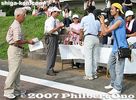
A representative from each winning team went to receive a medal and Lake Biwa Rowing Song CD. Each team had 5 members, so 5 CDs per team.
|
|

Singing "Lake Biwa Rowing Song" (Biwako Shuko no Uta)
|
|
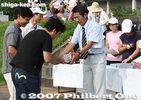
The Lake Biwa Rowing Song CDs were donated by Philbert Ono.
|
|

Singing "Lake Biwa Rowing Song" (Biwako Shuko no Uta)
|
|
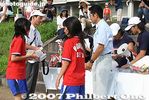
The junior category team receive their medals and CDs.
|
|

Singing "Lake Biwa Rowing Song" (Biwako Shuko no Uta)
|
|

The beautiful 15-page program included an ad for the Lake Biwa Rowing Song CD.
|
|

View of Seta River race course from Karahashi Bridge
|
|

Truck to carry the boats
|
|
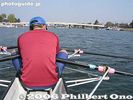
Rowed all the way to Seta Karahashi Bridge and the shinkansen tracks. It was my first time rowing on a competitive rowing boat, and not too difficult even for a beginner.
|
|

Todai and Kyodai coming round the bend
|
|

Kyoto Univ. goes on to win the main race of the day in 10 min. 11 sec., over 20 sec. ahead of Todai.
|
|
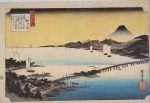
Hiroshige's woodblock print of Evening Glow at Seta from his "Omi Hakkei" (Eight Views of Omi) series.
|
|
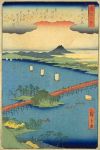
Hiroshige's woodblock print of Evening Glow at Seta from his "Omi Hakkei" (Eight Views of Omi) series.
|
|

Seta no Karahashi Bridge (stone sign) and Seta River. This was before the bridge got a new paint job in 2012. 瀬田の唐橋
|
|
|

Gallery Karahashi is a fine-art rental gallery near Seta Karahashi Bridge ギャラリー唐橋
|
|

Entrance to Seta Karahashi Bridge, west end. MAP
|
|

Crossing Seta Karahashi Bridge
|
|

Sinking yakata-bune boat
|
|
|

Seta Karahashi Bridge before the new paint job.
|
|

Seta River seen from Seta Karahashi Bridge
|
|
|

Seta Karahashi Bridge
|
|

Seta Karahashi Bridge, east end
|
|

Seta no Karahashi Bridge, one of the Eight Views of Omi ( Omi Hakkei )
|
|

"Karahashi Bridge at Seta" before the new paint job in 2012.
|
|

Seta Karahashi Bridge crossing Seta River is a historically famous bridge.
|
|

Seta Karahashi Bridge from east end
|
|

Legend of Seta Karahashi Bridge with Fujiwara Hidesato who killed the giant centipede on Mt. Mikami.
|
|
|

Legend of Seta Karahashi Bridge about Fujiwara Hidesato who killed the giant centipede on Mt. Mikami.
|
|
|

Seta Riverbank
|
|

Seta Riverbank and shinkansen bullet train
|
|

Dock for Setagawa River boat cruise in Otsu.
|
|
|

Setagawa River boat cruise modeled after the Ichiban-Maru paddlewheel steamboat which cruised on Lake Biwa in the 19th century. In operation during warmer months from Ishiyama-dera port and stopping at Nango Aqua Biwa and Seta-no-karahashi ports.
|
|

The Seta are is also accessible by bus.
|
|

Seta River, Shiga Pref. 瀬田川
|
|

Seta River is very scenic as you leave Lake Biwa.
|
|
|
|

Small shells along the river
|
|

Seta Castle ruins 瀬田城跡
|
|

Gate to Seta Castle, Otsu, Shiga Pref. 瀬田城跡
|
|

Gate to Seta Castle ruins 瀬田城跡
|
|

Seta Castle site
|
|

Seta Castle site
|
|

Seta Castle site
|
|

Seta Castle site
|
|

Seta Castle site
|
|

Seta Castle site
|
|

Seta Castle garden
|
|

Seta Castle garden
|
|

Seta Castle garden
|
|

Seta Castle stone lantern
|
|

Seta Castle stone lantern
|
|

Seta Castle stone lantern
|
|

Seta Castle stone lantern
|
|

Seta Castle site
|
|

Near Seta Karahashi Bridge is Ryuogu Hidesato-sha Shrine (龍王宮・秀郷社). Worships the Dragon King and Fujiwara Hidesato who killed the giant centipede on Mt. Mikami.
|
|

Ryuogu Hidesato-sha Shrine is also called Hashimori Ninja shrine (橋守神社). Worships Fujiwara Hidesato who killed the monster centipede from Seta-no-Karahashi Bridge and his wife the dragon king's daughter. Shrine built by his descendants.
|
|

Bishamonten Temple is also called Unjuji Temple (雲住寺). Also built by built by Fujiwara Hidesato descendants where his swords, spearheads, and family records are kept.
|
|

Bishamonten Temple
|
|

Near the head of Seta River
|
|

JR Tokaido Line train tracks crossing Seta River
|
|

JR Tokaido Line train tracks crossing Seta River
|
|

Seta River and reeds
|
|

Seta River
|
|

Seta River and reeds
|
|

Karahashi-mae Station on the Keihan Ishiyama Sakamoto Line is the closest station to Seta-no-Karahashi Bridge.
|
|

During early or mid-April, you can see cherry blossoms while walking from the station to the Ishiyama-dera along the Seta River.
|
|

Cherry blossoms along Seta River in Otsu, Lake Biwa's only outflowing river.
|
|

View of Seta River in spring from Ishiyama-dera. Ahead is Lake Biwa.
|
|
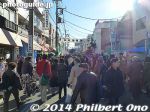
The Setagaya Boro-ichi is held on Dec. 15-16 and Jan. 15-16 annually.A large outdoor flea market of used and new clothing, antiques, household items, food, plants, and crafts.
|
|
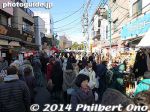
All sorts of knickknacks on sale. Some 700 stalls line the a few narrow streets near Setagaya and Kamimachi Stations on the Tokyu Setagaya Line.It can get pretty crowded when it's not raining.
|
|

Boro-ichi started over 400 years ago in 1578 when Odawara daimyo Lord Hojo Ujimasa opened a market place in this area. It started out selling old clothing and used goods, so it came to be called "boro-ichi" (rag market). Today, vendors also sell antiques, used books, food, household items, and all kinds of knick-knacks.
|
|
|
|

Old kimono.
|
|
|
|
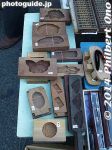
Molds
|
|
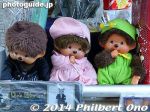
Monchhichi
|
|
|
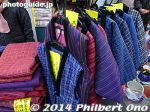
Hanten
|
|
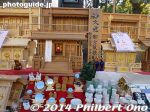
Household shrines
|
|

Household shrines, kamidana
|
|
|
|
|
|
|
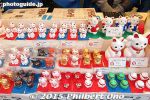
Maneki neko or beckoning cat
|
|
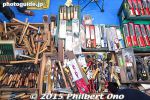
Tools and knives
|
|
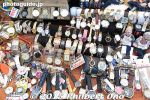
Wristwatches
|
|
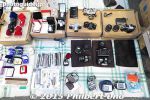
Small cameras
|
|
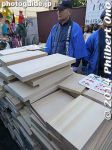
Cutting boards
|
|
|
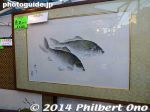
Gyotaku print (Fish print)
|
|
|
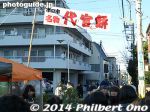
Way to daikan mochi.
|
|
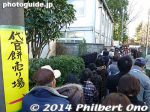
Long line to buy daikan mochi, one of the famous things about the boro-ichi.
|
|
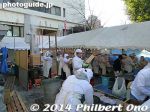
Making daikan mochi on site.
|
|
|

Three flavors of daikan mochi.
|
|
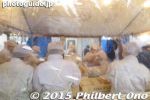
Busy preparing and packaging the mochi.
|
|
|
|